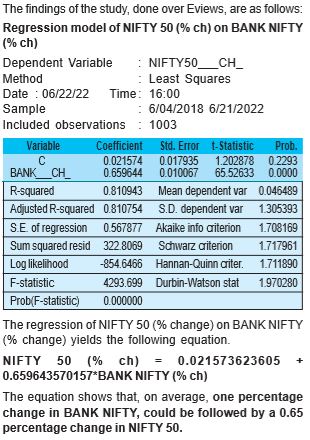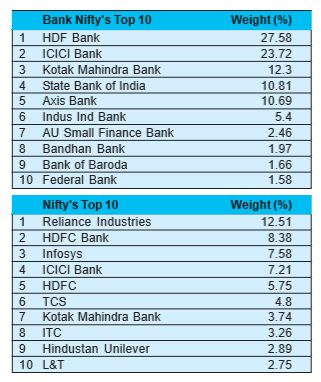Nifty and Bank Nifty have enjoyed the affection of derivative traders that no other indices have been lucky with. Those who like to take a view on the broader market stick with Nifty, which also has liquidity in the far months and along OTMs. Meanwhile, those who have like volatility, warm up to Bank Nifty. Either way, the attractiveness of both has helped NSE become the largest derivative marketplace in the world, in 2021, a spot it has kept for three years in a row. The popularity has also led to traders trying to bring in comparison between the two, with a view to effect arbitrage trades, or as a means to predict the performance of the other based on the other. Prima facie we know that both appear to have some relationship, but we have never been sure as is evident from the fact that the ratio of Bank Nifty to Nifty has risen from 0.66 in 2000 to 2.13 in June 2022.
To investigate further, we applied a simple linear regression model, a statistical method, to assess the nature and strength of the relationship between Nifty and Bank Nifty. Using their close prices between the period of 1st June 2018 to 21st June 2022, we found the coefficient of determination to be quite high (R2 is 0.824) and Durbin-Watson stat to be low at 0.009231. With R2 quite higher than DW stat, the relationship between Nifty and Bank Nifty was deemed spurious. In other words, the regression model concluded that the relationship that we assume to be there between the two indices is non-existent and meaningless.
However, the regression model began to make sense, once the price variables were replaced by their respective price percentage change. The spurious nature of the previous approach vanished, with DW stat emerging to be higher than R2.

But we know that this is not a static relationship. The main reason lies with the make-up of the two indices.

Bank Nifty has fewer constituents that Nifty. As against 12 stocks in Bank Nifty, there are 50 constituents in nifty. The top stocks in Bank Nifty are different from that in Nifty. While 50% of the stocks in Bank Nifty find place in Nifty, but those stocks contribute only around 25% weight in Nifty. This pretty much explains the evolution of the ratio of Bank Nifty to Nifty from 0.66 to 2.13 in the span of a little over two decades amply suggesting that the relationship is a fluid one.






